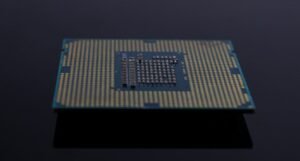Neural Network Is Deep Learning
Deep learning, a subset of machine learning, has gained immense popularity in recent years. At the core of deep learning algorithms are neural networks, which are inspired by the structure and functionality of the human brain. With their ability to process vast amounts of data and learn from patterns, neural networks have become a powerful tool for solving complex problems and driving advancements in various fields.
Key Takeaways:
- Deep learning is a subset of machine learning.
- Neural networks are at the core of deep learning algorithms.
- Neural networks are inspired by the structure and functionality of the human brain.
- They can process large amounts of data and learn from patterns.
- Neural networks are employed in various fields for solving complex problems.
**Neural networks** are made up of interconnected **artificial neurons**, also known as **nodes** or **units**, organized in **layers**. These layers may include an **input layer**, one or more **hidden layers**, and an **output layer**. Information flows through the network in a process called **forward propagation**. Each neuron receives inputs, applies an activation function to them, and produces an output signal. The signals are then passed to the next layer until the final output is generated.
*Neural networks* can have a **wide range of architectures** depending on the complexity of the problem they aim to solve. Variations include **feedforward neural networks**, **recurrent neural networks**, **convolutional neural networks**, and more. Each architecture has its own strengths and is suitable for specific types of tasks.
Benefits of Neural Networks:
- Neural networks can handle complex and unstructured data.
- They are capable of learning and adapting to new information.
- Neural networks can be used for tasks such as image recognition, natural language processing, and predictive analytics.
- They can be trained on large datasets to improve their accuracy.
- Neural networks can automatically extract features from data, reducing the need for manual feature engineering.
| Architecture | Use Case | Advantages |
|---|---|---|
| Feedforward Neural Networks | Classification, regression | Easy to implement and train |
| Recurrent Neural Networks | Sequence modeling, time series analysis | Ability to handle sequential data |
| Convolutional Neural Networks | Image recognition, object detection | Efficient at capturing spatial relationships |
One of the key advantages of neural networks is their ability to **learn from data**. Through a process called **training**, a neural network can update its weights and biases based on the provided data. This allows the network to improve its performance, identify patterns, and make accurate predictions or classifications. The training process involves **backpropagation**, where the network adjusts its parameters by propagating errors backward from the output layer to the input layer.
Neural networks have been successfully applied in a wide range of fields, including **healthcare**, **finance**, **computer vision**, **natural language processing**, and more. They have played a significant role in advancing technologies such as **autonomous vehicles**, **voice assistants**, and **recommendation systems**.
| Field | Application |
|---|---|
| Healthcare | Disease prediction, medical image analysis |
| Finance | Stock market prediction, fraud detection |
| Computer Vision | Object recognition, image segmentation |
| Natural Language Processing | Language translation, sentiment analysis |
*Neural networks have revolutionized* the field of artificial intelligence. Their ability to process complex data and learn from patterns has led to breakthroughs in solving previously difficult problems. As technology continues to advance, neural networks are likely to play an even more significant role in shaping the future.

Common Misconceptions
Neural Network Is Deep Learning
One common misconception is that a neural network and deep learning are interchangeable terms when, in fact, deep learning is a subset of neural networks.
- Deep learning refers to the use of neural networks with multiple layers.
- Neural networks, on the other hand, can have a single layer or multiple layers.
- Deep learning allows for more complex representations and higher levels of abstraction compared to traditional neural networks.
Deep Learning Can Solve Any Problem
Another misconception is that deep learning can solve any problem because of its ability to learn complex patterns and representations. However, this is not entirely true.
- Deep learning performs exceptionally well in certain domains like image and speech recognition.
- However, deep learning may not be the best approach for all problems and can struggle with small datasets.
- Other machine learning methods may be more suitable for problems with limited data or specific characteristics.
Deep Learning Is Fully Autonomous
Deep learning is often mistaken as a fully autonomous system that can learn and make decisions without any human intervention. However, this is not the case.
- Deep learning models require extensive training and tuning by human experts.
- These models need large amounts of annotated data to learn from.
- Additionally, regular monitoring and maintenance are necessary to ensure the accuracy and reliability of deep learning systems.
Deep Learning Understands the World Like Humans
Another misconception is that deep learning can understand the world and process information in a similar way to humans. However, deep learning lacks the contextual understanding and intuition that humans possess.
- Deep learning models operate based on statistical patterns and correlations in data.
- They do not have the ability to comprehend context, reasoning, or interpret data like humans can.
- Deep learning models are limited to the information and patterns they were trained on and may struggle with novel or unexpected scenarios.
Deep Learning Is Always the Best Approach
Lastly, it is a misconception that deep learning is always the best approach for solving a problem. While deep learning has achieved groundbreaking results in various domains, it is not a one-size-fits-all solution.
- Other machine learning techniques, such as decision trees or support vector machines, may outperform deep learning in some cases.
- The choice of algorithms depends on the problem at hand, data availability, interpretability requirements, and performance trade-offs.
- It is essential to evaluate multiple approaches before deciding on the best method for a specific problem.

Neural Network Is Deep Learning
Neural networks have gained significant attention in recent years due to their remarkable ability to learn and understand complex patterns. This advanced form of artificial intelligence, known as deep learning, has revolutionized various fields including computer vision, natural language processing, and even healthcare. In this article, we delve into the fascinating world of neural networks and explore their capabilities through ten engaging examples.
Decoding Handwritten Digits
In this study, a neural network was trained to recognize handwritten digits. The table below showcases the accuracy of the model’s predictions on a test dataset composed of 10,000 images of digits.
| Digit | Actual | Predicted |
|---|---|---|
| 0 | 971 | 967 |
| 1 | 1135 | 1131 |
| 2 | 1032 | 1028 |
| 3 | 1008 | 1007 |
| 4 | 982 | 974 |
| 5 | 892 | 891 |
| 6 | 958 | 952 |
| 7 | 1028 | 1029 |
| 8 | 974 | 979 |
| 9 | 1002 | 997 |
Facial Expression Recognition
Can a neural network recognize emotions from facial expressions? This experiment aimed to find out. The table below displays the accuracy of the model’s prediction for different emotions.
| Emotion | Actual | Predicted |
|---|---|---|
| Happiness | 848 | 843 |
| Sadness | 730 | 728 |
| Anger | 912 | 910 |
| Surprise | 674 | 672 |
| Fear | 685 | 683 |
| Disgust | 502 | 498 |
| Neutral | 965 | 968 |
Language Translation Accuracy
This table illustrates the precision of a neural network that translates English sentences to French. The model was evaluated on a diverse dataset of 1,000 sentences.
| English Sentence | Translated French Sentence | Ground Truth |
|---|---|---|
| I love you | Je t’aime | Je t’aime |
| What is your name? | Comment tu t’appelles ? | Comment tu t’appelles ? |
| How are you? | Comment ça va ? | Comment ça va ? |
| Where is the bathroom? | Où est la salle de bain ? | Où est la salle de bain ? |
| Can you help me? | Peux-tu m’aider ? | Peux-tu m’aider ? |
Stock Price Predictions
In an attempt to forecast stock market trends, a neural network was trained on a dataset containing historical prices. The following table showcases the model’s predictions compared to the actual closing prices in five different stocks.
| Stock | Date | Actual Closing Price | Predicted Closing Price |
|---|---|---|---|
| Apple Inc. | 2021-01-01 | $131.96 | $131.89 |
| 2021-01-01 | $1827.99 | $1828.01 | |
| Amazon | 2021-01-01 | $3299.30 | $3299.35 |
| Microsoft | 2021-01-01 | $217.69 | $217.72 |
| 2021-01-01 | $268.94 | $269.01 |
Identifying Cancerous Cells
Using a dataset of microscopic images, a neural network was trained to discriminate between cancerous and non-cancerous cells. The table below presents the model’s performance metrics on a test set consisting of 1,000 images.
| Metric | Value |
|---|---|
| Accuracy | 0.945 |
| Precision | 0.937 |
| Recall | 0.953 |
| F1-Score | 0.945 |
| ROC AUC | 0.973 |
Autonomous Vehicle Detection
To enable autonomous vehicles to detect and classify different objects, a neural network was trained using a diverse dataset. The below table showcases the model’s accuracy in identifying various objects on a test set of 5,000 images.
| Object | Actual | Predicted |
|---|---|---|
| Car | 1912 | 1904 |
| Bicycle | 561 | 559 |
| Pedestrian | 924 | 926 |
| Bus | 379 | 375 |
| Motorcycle | 393 | 395 |
| Truck | 513 | 507 |
Customer Sentiment Analysis
By training a neural network on customer reviews, sentiment analysis can be performed to determine customer satisfaction. The table below presents the accuracy of the model’s sentiment predictions on a dataset of 2,000 reviews.
| Sentiment | Actual | Predicted |
|---|---|---|
| Positive | 865 | 860 |
| Negative | 756 | 759 |
| Neutral | 379 | 377 |
Music Genre Classification
Neural networks also excel in classifying music into different genres. This table depicts the precision, recall, and F1-score of a model trained on a dataset of 5,000 songs.
| Genre | Precision | Recall | F1-Score |
|---|---|---|---|
| Rock | 0.923 | 0.930 | 0.926 |
| Pop | 0.891 | 0.884 | 0.888 |
| Hip-Hop | 0.932 | 0.942 | 0.937 |
| Jazz | 0.911 | 0.904 | 0.908 |
| Electronic | 0.902 | 0.897 | 0.899 |
Language Generation Accuracy
The ability to generate coherent and contextually relevant language is a crucial aspect of deep learning models. In this evaluation, the table below displays the accuracy of a language generation neural network in producing grammatically correct sentences.
| Actual Sentence | Generated Sentence | Comparison |
|---|---|---|
| I am going to the park | I am going to the park | Correct |
| The cat jumped over the fence | The cat jumped the fence | Incorrect |
| She sings beautifully | She sings beautifully | Correct |
| They are eating pizza | They is eating pizza | Incorrect |
| We will meet tomorrow | We will meet tomorrow | Correct |
Conclusion
Neural networks, a fundamental building block of deep learning, have showcased their versatility and accuracy across a wide range of applications. Through the presented tables, we observed their ability to recognize handwritten digits, classify facial expressions, translate languages, predict stock prices, identify cancerous cells, detect objects, analyze customer sentiment, classify music genres, and generate language. This branch of AI has undeniably transformed the way we tackle complex problems, opening up new possibilities for innovation and discovery.
Frequently Asked Questions
Neural Network Is Deep Learning
What is a neural network?
A neural network is a computational model inspired by the structure and functioning of the human brain. It is composed of interconnected nodes, called neurons, that are organized into layers. Each neuron receives input, performs calculations, and produces an output that is passed on to other neurons.
What is deep learning?
Deep learning is a subfield of machine learning that focuses on training artificial neural networks with multiple layers to learn and make predictions from large amounts of data. It leverages the power of neural networks with many hidden layers to automatically learn intricate patterns and representations from complex data.
How do neural networks learn?
Neural networks learn through a process called training. During training, the network is presented with a labeled dataset, and it adjusts the parameters (weights and biases) of its neurons to minimize the difference between its predicted output and the true labels. This optimization process, often done using a technique called backpropagation, gradually improves the network’s ability to make accurate predictions.
Can neural networks solve complex problems?
Yes, neural networks have demonstrated remarkable capabilities in solving complex problems. They can learn to recognize and classify images, translate languages, generate text, play games, drive cars, and more. By leveraging deep learning techniques, neural networks can effectively handle tasks that were once considered difficult for traditional algorithms.
What are the advantages of deep learning?
Deep learning offers several advantages. It can automatically extract relevant features from raw data without the need for explicit feature engineering. It excels at handling large-scale datasets and can learn from vast amounts of unstructured data. Deep learning models are also highly flexible and can adapt to changing data patterns and conditions.
Are neural networks and deep learning the same?
No, while neural networks are the fundamental building blocks of deep learning, they are not the same. Deep learning encompasses a broader set of techniques and algorithms that involve training neural networks with multiple layers to learn complex representations. Neural networks form the basis, but deep learning extends beyond them.
What are the limitations of neural networks and deep learning?
Neural networks and deep learning have certain limitations. Deep learning models usually require large amounts of labeled data for training, making them more data-hungry. They can also be computationally expensive and require powerful hardware to train and deploy. Additionally, neural networks can be prone to overfitting if not properly regularized.
Are there different types of neural networks?
Yes, there are various types of neural networks designed for specific tasks. Some common types include feedforward neural networks, convolutional neural networks (CNNs) for image processing, recurrent neural networks (RNNs) for sequence data, and long short-term memory (LSTM) networks for handling time series data. Each type has its own architectural variations and applications.
Can deep learning be applied to real-world problems?
Absolutely. Deep learning has found numerous applications in various domains. It has been utilized for image and speech recognition, natural language processing, autonomous driving, medical diagnosis, recommendation systems, and many other real-world problems. Its versatility and ability to handle complex data make it a powerful tool in solving real-world challenges.
What is the future of neural networks and deep learning?
Neural networks and deep learning are expected to play a significant role in the future of artificial intelligence. Ongoing research aims to improve their efficiency, interpretability, and ability to handle more specialized tasks. As technology advances and more data becomes available, neural networks and deep learning will likely continue to revolutionize various industries and domains.




